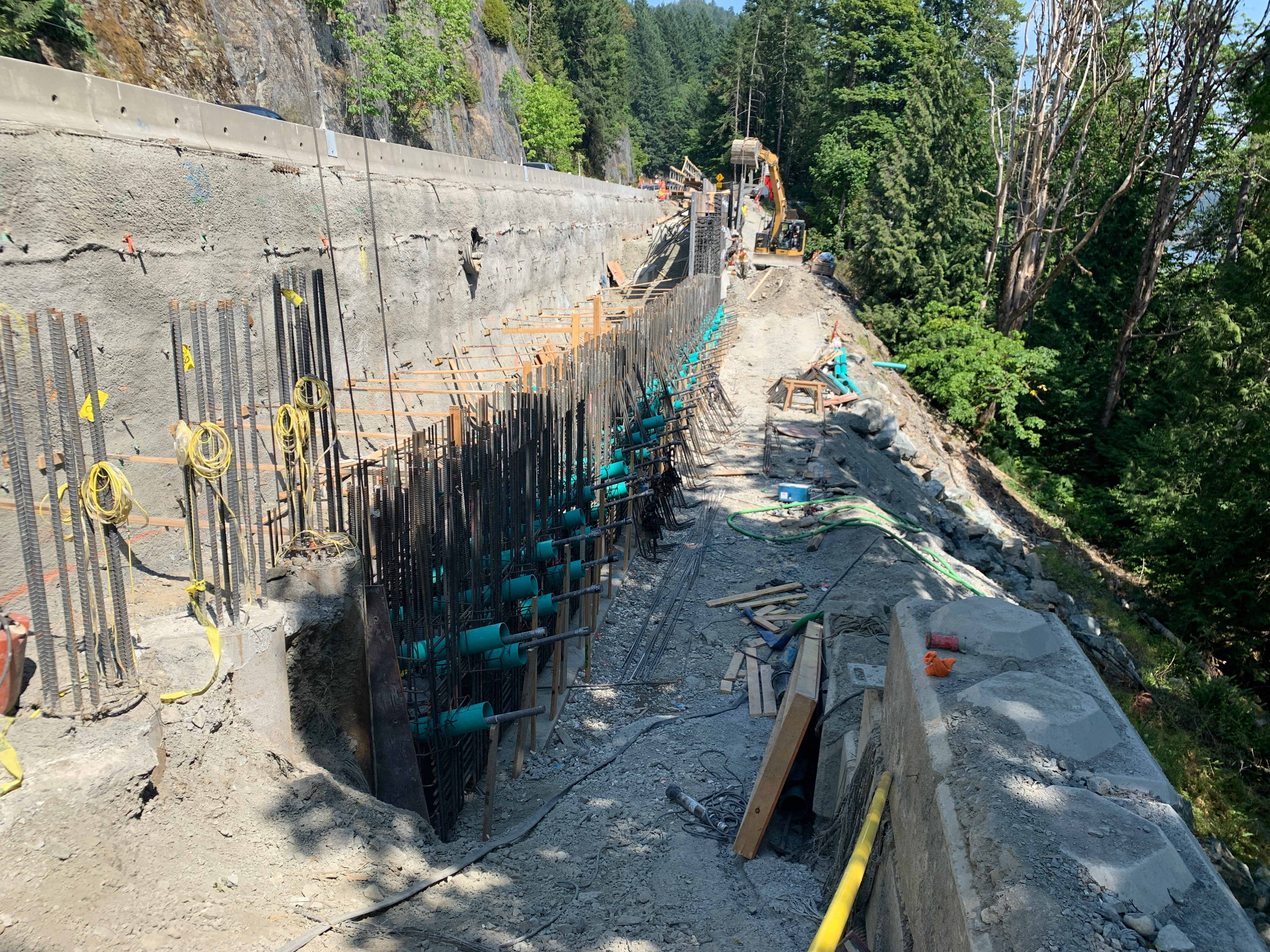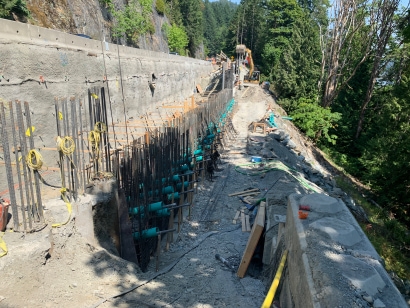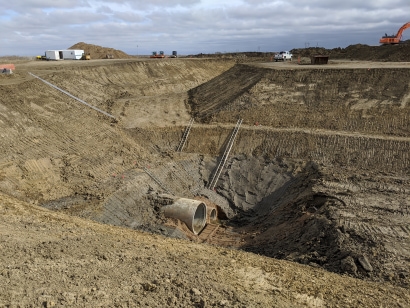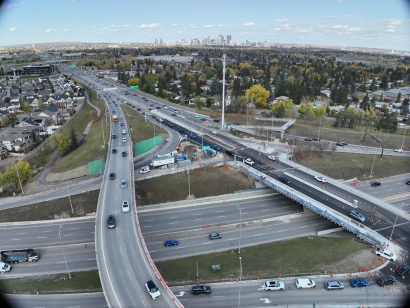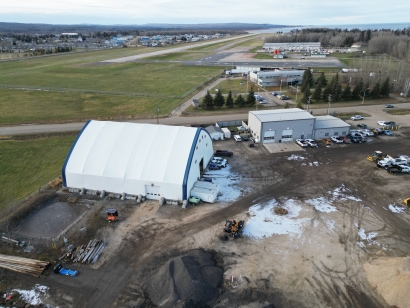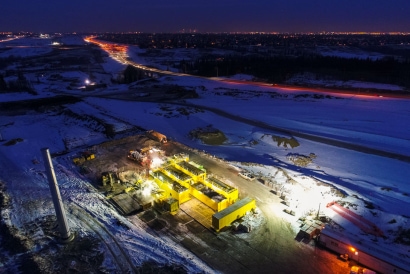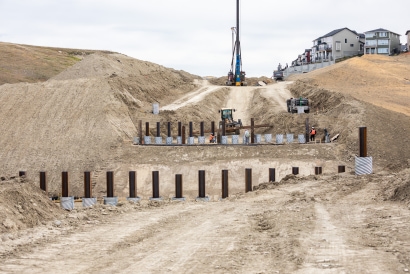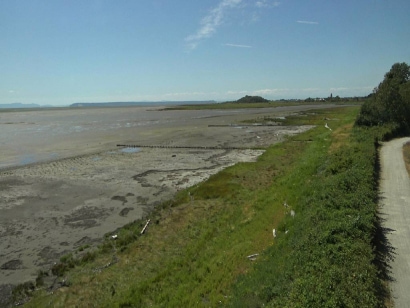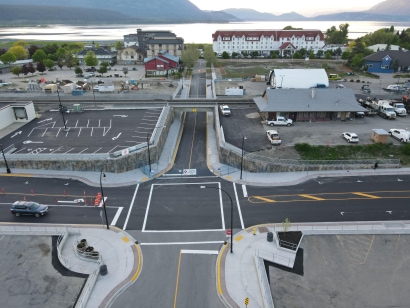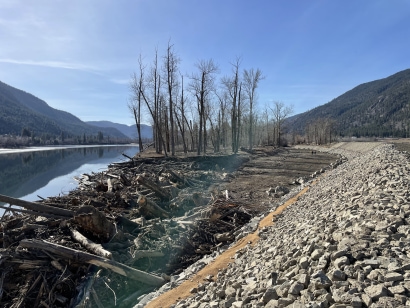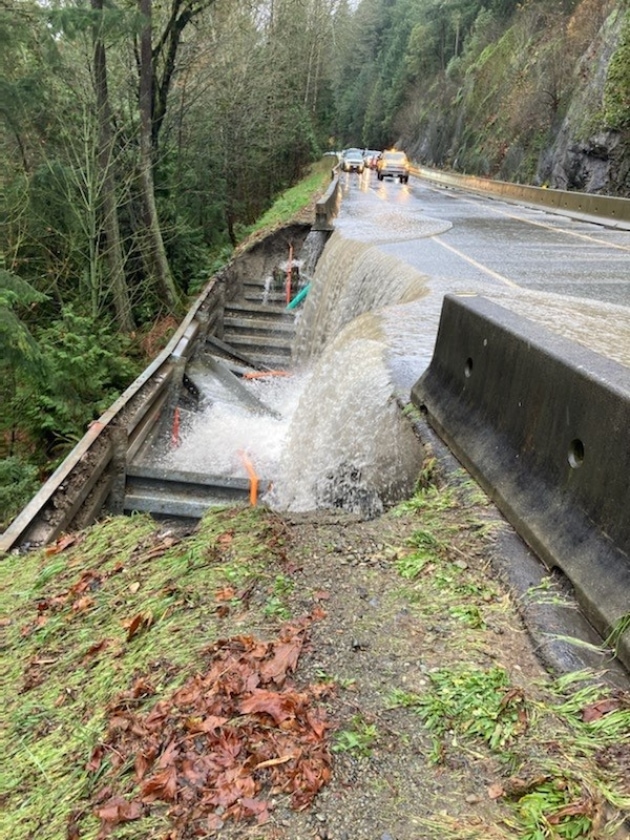
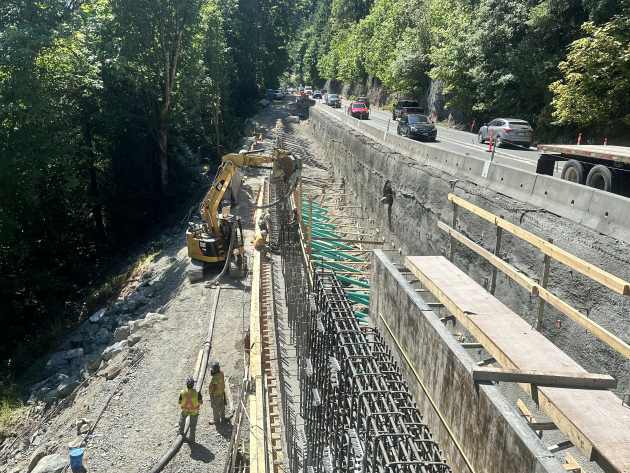
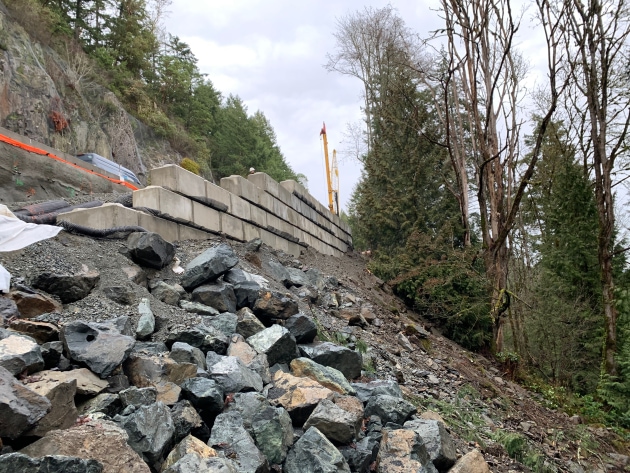
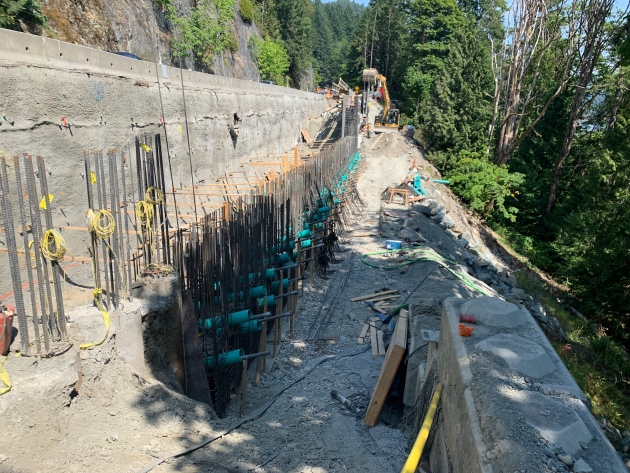
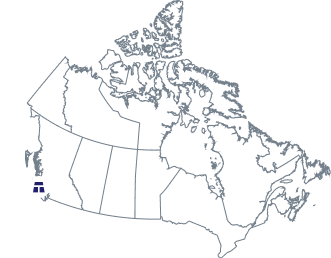
Client
Ministry of Transportation and Infrastructure
Sector
Transportation
Services
Geotechnical Engineering, Award Winning
Emergency response. Quick solutions.
In November 2021, an atmospheric river hit Highway 1 in the Malahat on Vancouver Island. For more than 60 hours, 182 millimeters of rainfall led to drainage failure, causing the Tunnel Hill wall structure to collapse. This important highway section supports over 25,000 vehicles a day, and the resulting single-lane conditions backed up traffic for kilometres due to limited available detours.
Thurber Engineering Ltd. and McElhanney Ltd. supported the Ministry of Transportation and Infrastructure (MoTI) through two key phases: emergency response and recovery. Within 24 hours of the washout event, our teams mobilized geotechnical, highways, drainage, and structural specialists to site to assess the immediate danger to the highway and provide recommendations to support single lane alternating traffic after the flood waters receded. We developed an effective design for a temporary shotcrete and rock anchor support to underpin the highway to facilitate removal of the damaged structure and rapid restoration of two-way traffic. McElhanney and Thurber worked collaboratively with MoTI and the Maintenance Contractor to accomplish the restoration of two-way traffic within four days of the washout event.
The recovery phase began the very next day, following the return of two-way traffic, starting with mobilization of the geotechnical investigation. The team immediately went to work exploring possible permanent solutions. We conducted a multiple account evaluation of several possible design solutions and rapidly evaluated them. We thus helped MoTI determine the optimal solution to advance into detailed design and choose the appropriate procurement methodology for construction.
The selected retaining wall solution comprised 84 steel pipe piles with 98 rock bonded tieback anchors joined by a 100m long castin-place concrete cap and an upstand wall. This innovative wall solution increased the resiliency of this piece of critical infrastructure, as the new retaining wall is substantially more resistant (and less vulnerable) to a washout like the event of November 2021, compared with the original grade-supported gravity wall. The new wall addresses the updated structural loading, per the bridge design code, and the global stability of the slope that supports the highway during the design earthquake. As the existing wall failure was linked to insufficient roadway drainage at the site, our multidisciplinary design team also incorporated an innovative water collection system providing resiliency against being clogged by debris by conveying water under the highway through two separate culverts that daylight through the new concrete wall. The design also considered effective future maintenance and access for the design life of the infrastructure.
Given the urgency to reopen the highway for continuous two-way traffic, our team proposed an internal value engineering (VE) review to satisfy MoTI’s requirement for a VE workshop on all projects with a capital cost of over $5M. McElhanney and Thurber assembled an internal, independent team of specialists to evaluate the design for improvements to reduce cost and schedule duration, and improve constructability.
Our team completed detailed design and tender documents for the new retaining wall within four months. The project exemplifies resilience, coordination, responsiveness and partnership.
This impressive project received the 2024 Award for Design and Contract Preparation - Structures at the 2024 British Columbia Transportation Consulting Engineers Awards.


